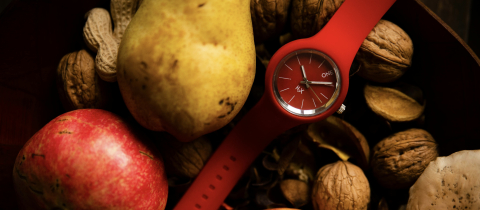Cissus quadrangularis is a plant which belongs in the grape family, has red berries, and green or yellow flowers. Cissus quadrangularis is also the name slapped across a lot of supplements that claim to support ‘optimal joint health’, ‘promote healthy bone structure’, and support ‘healthy weight management’. Add in a few anti-ulcer properties, a pain-killing effect and even type II diabetes support, and this all sounds too good to be true. And it is right?
Well, as per usual, there’s some truth to this plant’s claims, and a lot of overblown and overhyped information.
Cissus quadrangularis has been used for centuries in the traditional medical practices of India. It’s used as a pain reliever, and to heal broken bones. Indeed one of its many names is asthisamharaka, which translates to ‘that which prevents the destruction of bones’.
There are a lot of claims about C. quadrangularis (CQ), but we can broadly divide them into a few different groups, its action as an: analgesic (pain relieving), anti-inflammatory, antioxidant, bone growth supplement and weight loss supplement. Let’s unpack these one at a time.
There have been a few studies looking at the potential pain relieving effects of CQ. A 2010 study looked at the ability of CQ supplements to inhibit pain in rats. They compared 50, 100 and 150 mg/kg bwt (body weight) of CQ with 300 mg/kg bwt of aspirin, and found CQ to be more effective than aspirin at 150 mg/kg bwt. A 2008 study looked at CQs analgesic effects in albino mice, and found that at doses of 250 or 350 mg/kg bwt CQ worked to inhibit both neurogenic pain (pain from damage to nerves) and inflammatory caused nociceptive pain (pain resulting from injury). The extra 100 mg/kg bwt of CQ caused a ~10% increase in pain tolerance, in both types of pain. A 2008 study echoed the finding that CQ acts as an analgesic, and suggests ‘the analgesic activity may be due to the presence of carotene, phytosterol substances, calcium, sitosterol, amyrin and amyrone’.
Most analgesics also have some anti-inflammatory action, and it seems that CQ is no different. This 2007 study looked at the supplement’s analgesic, anti-inflammatory and venotonic (increasing venous blood flow) effects, specifically in how they may be used to treat hemorrhoids, and rules positively. The same study that looked at pain in rats also examined CQ’s ability to act as an anti-inflammatory and an antipyretic. As an anti-inflammatory, 150 mg/kg bwt CQ was more effective than 300 mg/kg bwt aspirin for the first 3 hours after administration. After this time, CQ lagged behind aspirin, but only slightly. As an antipyretic, CQ in the doses tested (50, 100, 150 mg/kg bwt) was less effective than aspirin, but still showed ‘marked’ antipyretic effects.
As far as antioxidant action goes, CQ seems to fair quite well. This 2010 study notes CQ’s efficacy at lowering lipid levels, improving insulin sensitivity and general antioxidant protection. A 2006 study examined CQ’s potential in treating ulcers caused by NSAIDs (like Advil). In doses of 500 mg/kg bwt, CQ was shown to ‘effectively reduce the extant of gastric lesions’ when used before aspirin treatments. The antioxidants in CQ allow it to enhance ‘defence enzymes in gastric mucosal tissues’. It’s theorized that CQ acts by inhibiting the formation of pro-inflammatory cytokines (substances that tell the body to become inflamed), but no studies that I could find seem sure of the mechanism of CQ’s ulcer defence. They do, however, seem fairly sure that it works.
This 2004 study noted that CQ supplementation caused an increase in mucous secretion in the stomach, and an increased concentration of mucin, the major protein constituent, in that mucous. It also noted a decreased number of shed cells, and an increase in the DNA per mg of mucous, both of which signal healthier stomach lining. Another 2006 study mirrored the ulcer-healing properties of CQ, and suggested that the high β-carotene content of the plant is responsible for its antioxidative properties.
Speaking of healing things, why not bones too? This 2003 study found that treatment with 750 mg/kg bwt CQ per day for 3 months caused a significant increase in osteoblastic (bone cell formation) and decrease in osteoclastic (bone cell re-absorption) activity. It suggests that an unidentified anabolic phytogenic steroid is responsible for CQ’s osteoporosis fighting capability. This 2009 study mimics the preventative effects of CQ on bone loss, and postulate that its effect is due to the steroids interacting with estrogen receptors. A different 2009 study gave perhaps the most in depth analysis of CQ’s method of action. It found that CQ activated and sped up the process of turning bone marrow stem cells into osteoblasts (bone cells).
Now for the claim that seems to be the odd one out, CQ’s effectiveness as a weight loss drug. This 2006 study found that at daily doses of 1028 mg for 8 weeks, CQ combined with green tea, soy, B vitamins, selenium and chromium reduced ‘weight, % body fat, BMI and, especially, waist circumference of obese and overweight patients, regardless of calorie-controlled diet’. A 2008 study confirmed these results, and specifically found that a combination of CQ and Irvingia gabonensis (African Mango) positively affected patient’s weights and other parameters of metabolic syndrome.
So how can one plant be having this many effects? Well, that remains to be seen. When researching CQ I found an abundance of studies, without an abundance of answers, and I expect more research to be done in the future. We do know however a lot of the constituents in CQ, such as ‘flavanoids, triterpenoids, Vitamin C, stilbene derivatives, resveratrol, piceatannol, pallidol perthenocissin and phytosterols’. We know that ‘the plant contains ascorbic acid, 479 mg and carotene, 267 mg per 100 g freshly prepared paste, in addition to calcium oxalate’, and that ‘the root powder also contain a rich source of mineral elements (mg/100g dry matter): potassium 67.5, calcium 39.5, zinc 3.0, sodium 22.5, iron 7.5, lead 3.5, cadmium 0.25, copper 0.5 and magnesium 1.15’.
We need to be careful though not to fall into a trap of seeing a long list of chemical names and assuming it’s a new wonder drug. Some of these things are known to be beneficial to humans (like vitamin C), others have more debated effects (like resveratrol), and like every drug, dose matters. It doesn’t matter is CQ has pallidol, if it’s not in relevant amounts. Almost every study that I cited here ends with some variation of ‘further work is necessary to isolate active principles and elucidate the actual mechanism involved in the antioxidant activity of this plant’, meaning that even in the face of these results, these studies know that research is crucial to fully understand this supplements, before we can recommend it for humans. Not to mention that the majority of studies mentioned here were performed on rats or mice, and though they’re good human analogues, they are not perfect replicas.
There is also potentially some behind the scenes meddling at play in these remarkable findings. As this 2010 journal letter points out, ’at least 3 recently published studies support the safety and effectiveness of CQ for weight loss but lack financial disclosures or funding sources’. It’s a common practice for studies to mention their funding sources, whether they be McGill University, Government of Canada, or the Liquor Control Board of Ontario. Stating where the money comes from for a study allows readers to know if any involved parties have vested interests, as some CQ study authors seem to. The 3 aforementioned studies have an author in common, who holds the patent for Hydroxycut Advanced, a weight loss supplement using CQ. If that’s not a conflict of interest, then I’m not sure what is.
Looking at the studies of CQ, I’d be hard pressed to deny its potential for use in the treatment of a variety of illnesses, but looking at the state of CQ research right now, I wouldn't add it to my Amazon cart just yet.







